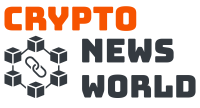An overview of the blockchain development lifecycle

This guide on blockchain application development presents eight steps for developing apps that are to live on the blockchain.
How long does it take to create a blockchain?
The development phase for blockchain applications can take a few months to a year or longer. It’s important to be strategic and delineate a roadmap. Developers must understand how much time is required to dedicate to each step before proceeding to the next stages.
Some questions to ask when going through this step include the following:
- What are the real-world use cases for this project?
- Does the project use smart contracts?
- How soon should early versions be released to attain an MVP?
- In what ways will blockchain technology integrate into this project?
- What blockchain programming language, external database and servers will the application use?
- How will this blockchain application interact with off-chain systems?
- Will the blockchain application feature hybrid components for both off- and on-chain applications?
- Does the application need a permissioned or permissionless network?
The goal is to create a timeline and outline a measurable workflow with milestones. Setting milestones helps track the blockchain project from its inception up until its completion.
The blockchain development process
This process is a proven and tested method for blockchain developers in the industry. Organizing the process in this manner yields the most efficient and ideal outcomes. The blockchain application development process comprises eight steps, detailed below.
The eight steps in the blockchain development lifecycle:
Define the problem to be resolved with blockchain application
The first step of this process involves identifying a problem that a blockchain can resolve successfully. It can be both costly and unnecessary to use a blockchain when it is not required. Therefore, it’s critical to identify a real-world problem that a blockchain can resolve.
Choose the best-fitting consensus mechanism
Each blockchain project utilizes its own consensus mechanism. The most common are proof-of-work (PoW) and proof-of-stake (PoS). Other consensus mechanisms like practical Byzantine fault tolerance, proof-of-burn, proof-of-activity and proof-of-capacity can be adopted only if they are better suited for the project.
Decide on a programming language and blockchain
At this point, focus on designing the user interface of the application. The chosen blockchain to be built on will affect the programming language used, which in turn will influence how users interact with the chain. Moreover, interoperability is an additional consideration when thinking of languages. But, which programming language is used for blockchain technologies?
Some of the popular programming languages for blockchain developers are as follows:

After selecting a language, a blockchain developer should pick a database to work with. MongoDB and MySQL are two popular choices.
Select a blockchain development platform
At this stage, developers should identify which blockchain to build on. This allows for immediate development without having to create a blockchain from scratch. The blockchain platform selection process depends on the consensus mechanism that is required. Take note of the problems resolved by each consensus mechanism.
Blockchain development often relies on popular platforms designed to make the process easier. These platforms are used by both blockchain development companies and independent developers.
Some of the most common platforms are open-source blockchain platforms, such as

Developers should choose a platform that utilizes a familiar blockchain programming language. Every platform listed here will facilitate the blockchain development cycle.
It’s best to look into each platform’s capabilities and drawbacks, which will help determine whether the blockchain platform suits the project.
Develop a strategy for the remainder of the development process
In this step of the blockchain development process, evaluate the steps taken thus far. Lay out a plan, and prioritize a strategy for a more comprehensive process. This strategy should account for the characteristics of the chosen platform.
Begin to design the blockchain architecture
Determine if the blockchain will include specific permissions for targeted user groups or if it will comprise a permissionless network. Afterward, determine whether the application will require the use of a private or public blockchain network architecture.
Also consider the hybrid consortium, or public permissioned blockchain architecture. With a public permissioned blockchain, a participant can only add information with the permission of other registered participants.
Ultimately, the option worth considering is the one that best fits the use case.
Develop the blockchain application
Configure the key aspects of the application. Ensure that permissions, block signatures, address formats and key management are addressed first. These elements cannot be changed once implemented, so it’s best to give them some consideration from the start.
After this stage, start working on the blockchain application’s Application Programming Interface (API). APIs are used to perform auditing functions, generate key pairs, and store or retrieve essential data. The selection of blockchain APIs is dependent on the goal of the application. These APIs will provide the most value to all users.
A developer must also set up middleware. Middleware is software that connects external systems to the blockchain, thereby allowing communication between blockchain components and the apps running on it.
Some APIs required by almost every blockchain include
- Key management
- Smart asset lifecycle management
- Smart contract management
- Key and address generation
APIs for digital signatures and generating hash numbers are also required for data authentication. The developer may use prebuilt APIs for blockchain applications or choose to create new ones from scratch. Relying on prebuilt APIs speeds up the development process while building APIs from scratch offers greater flexibility.
Test and release an alpha version of the application
In this step, all of the accumulated efforts from the previous steps pays off and an early version of the project is now ready for testing. At this stage of the development process, focus on the core functions. Developers should try to spot potential issues as they arise.
It’s best to start with the bare minimum. A Minimum Viable Product (MVP) is all that is required to prove the blockchain model’s viability. Once the application is stable, the developer may choose to incorporate more complex features.
How to become a blockchain developer?
Blockchain developer skills are in high demand at the moment. If the end goal is to work at a blockchain development company, then a comprehensive blockchain development tutorial should be the first item on any aspiring blockchain developer’s checklist.
Upon understanding the tradeoffs that blockchains can offer compared to traditional systems infrastructures, the blockchain development project can begin. These tradeoffs include full transparency, governance voting, customizable incentivization schemes and more.
It’s important to consider the blockchain project development lifecycle before kicking off a project. Breaking down how one wishes to apply the blockchain technology into steps helps considerably. These steps are known to comprise the blockchain development process (also known as the blockchain lifecycle).
How is a blockchain developed?
Databases developed with blockchain technologies are notoriously difficult to hack or manipulate, making them a perfect space for storing sensitive data. Blockchain software development requires an understanding of how blockchain technology works.
To learn blockchain development, developers must be familiar with interdisciplinary concepts, for example, with cryptography and with popular blockchain programming languages like Solidity.
A considerable amount of blockchain development focuses on information architecture, that is, how the database is actually to be structured and how the data to be distributed and accessed with different levels of permissions. For instance, should it be based on distributed ledger technology or not.
This decision, in turn, will impact everything from which parties get access to what data, how the data is to be shared between different parties, whether the majority voting will ensure the changing of data and so on.
What is blockchain development?
Blockchain application development refers to the process of creating a blockchain-native application.
Blockchain development differs from traditional application development in several important ways. In fact, a considerable amount of planning goes into blockchain development first due to additional considerations like choosing the most suitable incentivization scheme, the degree of transparency desired, specific group permissions and so on.
Core blockchain developers are responsible for the entire blockchain development lifecycle. The lifecycle includes researching its architecture and identifying use-cases for blockchain applications. Blockchain developers also optimize the blockchain database for diverse systems and applications.









